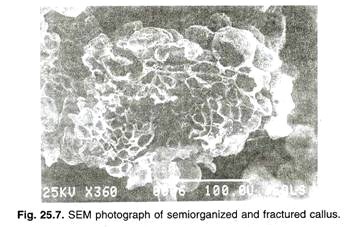This article throws light upon the six important terms used in landscape gardening. The terms are: 1. Axis 2. The Symmetrical Plan 3. Dynamic Symmetry 4. Asymmetrical Plan 5. Circulation in Landscaping 6. Vista.
Term # 1. Axis:
It is an imaginary line which divides garden into two parts. This also connects two or more points. It is presented in the form of a path, line of fountains or trees, etc. If this axis divides garden into two equal parts, it is called central axis. In formal style, axis is central whereas in informal style, it is oblique. This axis controls the movement in the garden from the entrance to the terminal. An axis in garden is directional, orderly or dominating.
Axis shows certain characteristics in the garden, for example:
1. An axis maybe straight, bent or deflected but never divergent [Fig. 25.1(a)].
2. A powerful axis requires powerful terminus e.g. Mogul gardens, (Fig. 25.1b).
When the axis terminates in a structure having entrance, one or three openings are better than two since they provide a receptive element rather than an obstruction.
3. The axis is a unifying element. (Fig. 25.1c).
Term # 2. The Symmetrical Plan:
In this plan, the different objects are in equilibrium about a central point or on either side of an axis. Symmetrical plan or formal plan is synonymous of beauty and is pleasant and handsome. This is because the symmetry is to be associated with plan clarity, rhythm, balance, unity, etc. Symmetrical plan being precise and disciplined, it requires precision in detail and maintenance and bold in concept.
Term # 3. Dynamic Symmetry:
In such symmetrical plan, each pole generates its own magnetic field and between these two fields there is a field of dynamic tension. Such dynamic symmetrical plan is found in Taj garden.
Term # 4. Asymmetrical Plan:
In such plans, there is absence of symmetry on both the sides of axis but balance, unity and harmony are maintained.
Term # 5. Circulation in Landscaping:
In landscape gardening it means a pathway from entrance to terminal point. Circulation varies with the style of gardening and topography. The more of circulation patterns, it has more points of views and attraction. Common circulation patterns are depicted in Fig. 25.2.
Term # 6. Vista:
It is a three dimensional confined view of terminal building or dominant element of feature. It may be natural or man-made. Natural vistas are very common around the lofty mountains and snowy peaks. The best example of man-made vista is a view of main building of Taj Mahal from the entrance gate. Overall effect of vista may be of its characteristics. It may be calm or induce motion.
There are three different parts of a vista viz:
(1) It should be subject to close control,
(2) It should have a viewing station to see object or objects,
(3) It should have intermediate ground.
These three should be satisfactorily united and thus result into an effect of totality.



